Cambodian military police yesterday opened fire with assault rifles to quell a protest by stone-throwing garment factory workers demanding higher pay in a crackdown a human rights group said killed four people.
Chaos during nationwide strikes erupted for a second day as security forces were deployed to halt a demonstration by thousands of workers, who refused to move and threw bottles, stones and gasoline bombs at an industrial zone in Phnom Penh.
The clash represents an escalation of a political crisis in Cambodia, where striking workers and anti-government protesters have come together in a loose movement led by the opposition Cambodia National Rescue Party (CNRP).

Photo: Reuters
Unions representing disgruntled garment workers have joined opposition supporters protesting against the government of Cambodian Prime Minister Hun Sen to demand a re-run of an election in July last year that the opposition says was rigged.
Military police confronting the protesters fired live ammunition, journalists said, and bullet casings were later seen scattered across the ground at the scene.
The clashes took place at Canadia Industrial Park, home to dozens of factories that make clothing for Western brands.
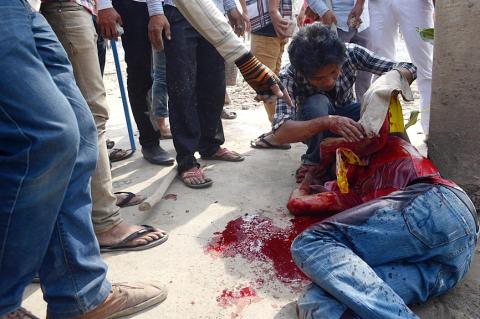
Photo: AFP
Human rights group LICADHO described the incident as “horrific” and lambasted military police, adding that their own investigation and surveys of hospitals had found four people were killed and 21 wounded.
“We condemn this appalling use of extreme lethal force by security forces,” LICADHO director Naly Pilorge said in a statement. “Security forces must now put an immediate end to the use of live ammunition against civilians.”
Spokesmen for the national police and military police said they could not verify the number of casualties.
The CNRP, led by former Cambodian finance minister Sam Rainsy, has courted about 350,000 garment workers from nearly 500 factories across the country by promising to nearly double the monthly minimum wage to US$160 if it wins a re-run of the July election, which Hun Sen is refusing to hold.
The government is refusing to raise the wage beyond US$100 a month and has ordered factories to reopen to prevent damage to an industry worth US$5 billion a year.
TAIWANESE FIRMS
Taiwanese garment makers Eclat Textile Co (儒鴻) and Makalot Industrial Co (聚陽) shut down their Cambodian factories for a week starting on Thursday last week and relocated their production to factories in neighboring countries.
The temporary shutdown was suggested by the Garment Manufacturers Association in Cambodia, the two firms said in filings to the Taiwan Stock Exchange yesterday.
They both said the strike would have little impact on their revenue and earnings.
“We reopened our factories on Jan. 2, and some workers have come back to work. But, we will close the factories again, for the safety reasons, if things turn violent,” Makalot public relations manager Mavis Chiu (邱美惠) said by telephone yesterday.
Makalot made 2.33 million units of apparel in Cambodia in 2012, accounting for 25 percent of its total production for that year, according to the company.
Eclat said its factory shutdown will reduce its production by 140,000 pieces of apparel, but that its clients have agreed to postpone their orders.
Eclat said its production capacity in Cambodia was about 450,000 pieces of apparel a month, accounting for 5 percent of its total production.
Additional reporting by Camaron Kao
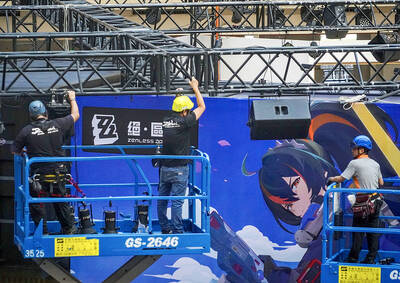
Taiwan is projected to lose a working-age population of about 6.67 million people in two waves of retirement in the coming years, as the nation confronts accelerating demographic decline and a shortage of younger workers to take their place, the Ministry of the Interior said. Taiwan experienced its largest baby boom between 1958 and 1966, when the population grew by 3.78 million, followed by a second surge of 2.89 million between 1976 and 1982, ministry data showed. In 2023, the first of those baby boom generations — those born in the late 1950s and early 1960s — began to enter retirement, triggering
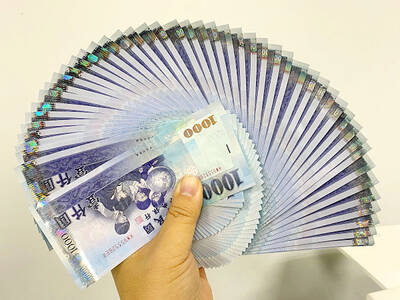
ECONOMIC BOOST: Should the more than 23 million people eligible for the NT$10,000 handouts spend them the same way as in 2023, GDP could rise 0.5 percent, an official said Universal cash handouts of NT$10,000 (US$330) are to be disbursed late next month at the earliest — including to permanent residents and foreign residents married to Taiwanese — pending legislative approval, the Ministry of Finance said yesterday. The Executive Yuan yesterday approved the Special Act for Strengthening Economic, Social and National Security Resilience in Response to International Circumstances (因應國際情勢強化經濟社會及民生國安韌性特別條例). The NT$550 billion special budget includes NT$236 billion for the cash handouts, plus an additional NT$20 billion set aside as reserve funds, expected to be used to support industries. Handouts might begin one month after the bill is promulgated and would be completed within
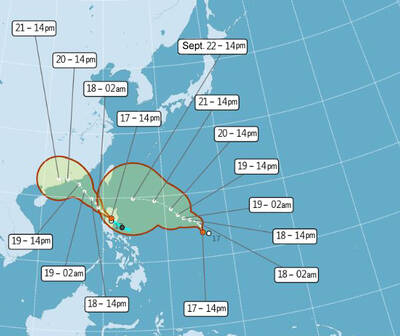
One of two tropical depressions that formed off Taiwan yesterday morning could turn into a moderate typhoon by the weekend, the Central Weather Administration (CWA) said yesterday. Tropical Depression No. 21 formed at 8am about 1,850km off the southeast coast, CWA forecaster Lee Meng-hsuan (李孟軒) said. The weather system is expected to move northwest as it builds momentum, possibly intensifying this weekend into a typhoon, which would be called Mitag, Lee said. The radius of the storm is expected to reach almost 200km, she said. It is forecast to approach the southeast of Taiwan on Monday next week and pass through the Bashi Channel
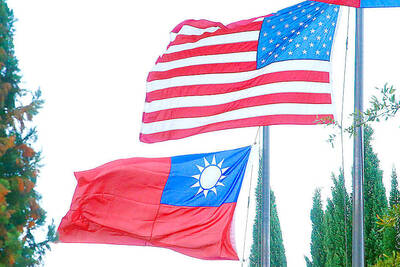
NO CHANGE: The TRA makes clear that the US does not consider the status of Taiwan to have been determined by WWII-era documents, a former AIT deputy director said The American Institute in Taiwan’s (AIT) comments that World War-II era documents do not determine Taiwan’s political status accurately conveyed the US’ stance, the US Department of State said. An AIT spokesperson on Saturday said that a Chinese official mischaracterized World War II-era documents as stating that Taiwan was ceded to the China. The remarks from the US’ de facto embassy in Taiwan drew criticism from the Ma Ying-jeou Foundation, whose director said the comments put Taiwan in danger. The Chinese-language United Daily News yesterday reported that a US State Department spokesperson confirmed the AIT’s position. They added that the US would continue to